NEW RICHMOND — Seven months after a smokestack toppled into the Ohio River during demolition of the retired Walter C. Beckjord coal plant, crews finally began underwater cleanup on Sept. 17.
A barge-mounted crane arrived late last week to remove an intact metal liner from the smokestack that is at least 100 feet long – or the length of six cars.
For months the U.S. Army Corps of Engineers has been ordering contractors at Beckjord to clean up the mess it made in a river that provides drinking water for 5 million people.
“To get to a point where it’s getting cleaned up is pretty exciting,” said Pierce Township Fire Chief Craig Wright.
Wright first complained to state and federal agencies about waste debris in the river at Beckjord in January. That debris was from a boiler demolition in October. The smokestack demolition in February sent additional debris tumbling into the river.

“I think it helps to really emphasize that we need legislative changes – whether it’s at the state level or the federal level,” Wright said. “So that there’s more oversight, more regulations into these decommissioned coal-fired plants. And that some agency is designated as having the authority to oversee what's goes on.”
Wright said he and other Clermont County officials learned that they had virtually no authority over what happened at the Beckjord site. Other agencies had piecemeal oversight, he said, with little to no enforcement penalties.
A spokesperson for the U.S. Army Corps of Engineers, which is overseeing the Ohio River cleanup at Beckjord, wrote in a statement to WCPO that its Louisville district “has been working closely with the permittee to ensure compliance throughout the cleanup process.”
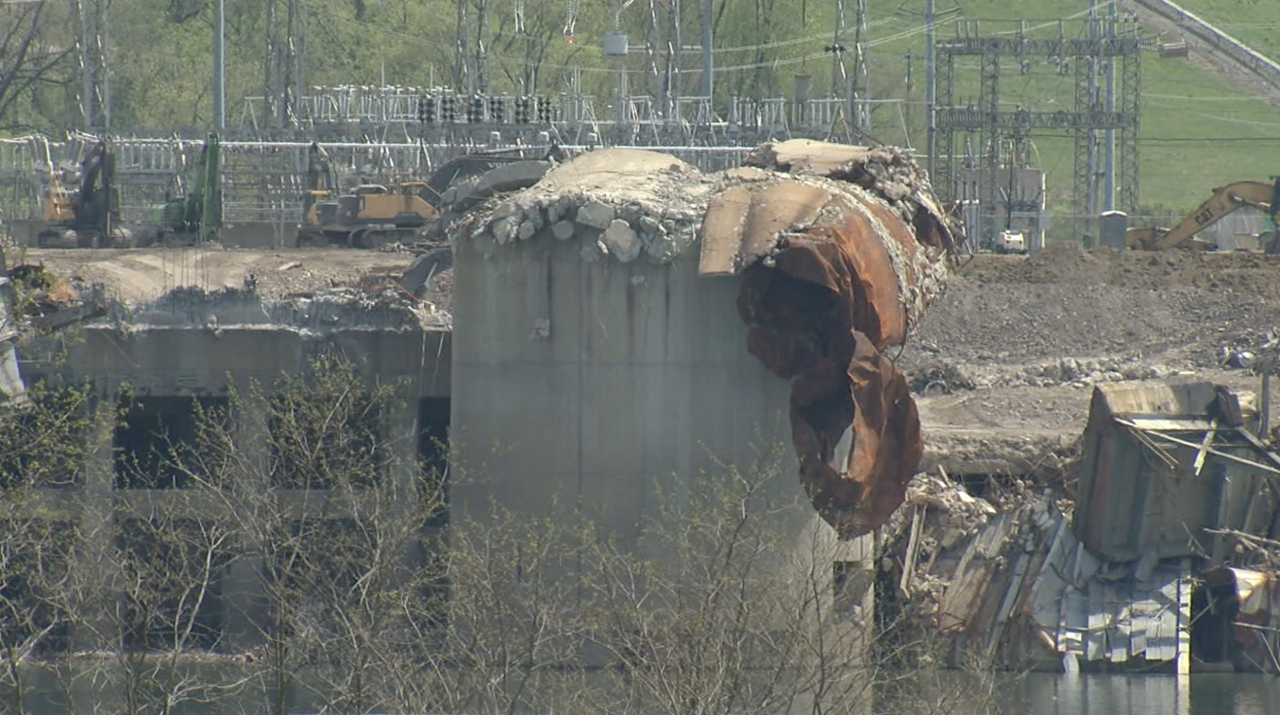
The Corps has not issued any fines or penalties related to the Beckjord cleanup, but a spokesperson said "that does not preclude the Corps from seeking penalties in the future."
Some say the delayed cleanup of demolition waste in the Ohio River highlights a bigger problem about lack of oversight at the now-dormant Beckjord plant.
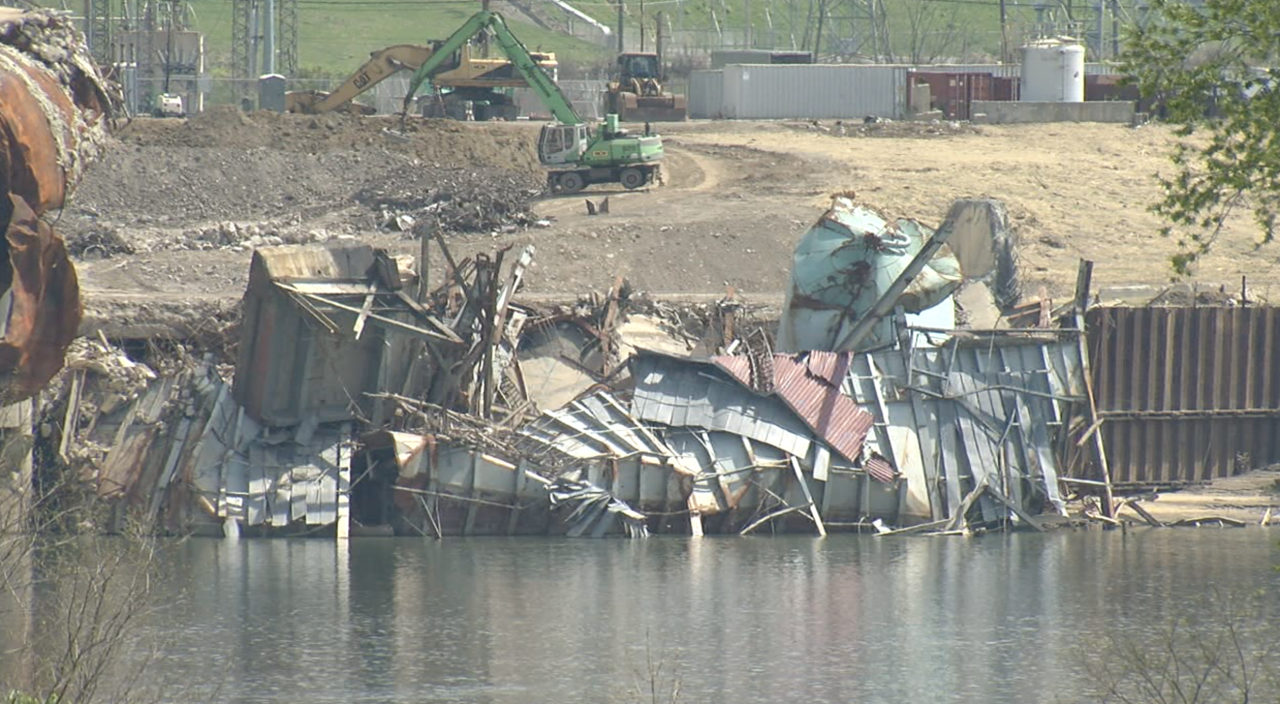
Built in the 1950s as a coal-burning giant, the Beckjord plant pumped electricity to hundreds of thousands of homes and businesses across Southwest Ohio for decades.
In 2014, Duke Energy closed the Beckjord plant, where more than 5 million tons of coal ash are buried in unlined, man-made ponds along the Ohio River. It is known as a legacy site because federal rules overseeing coal combustion residuals that took effect in 2015 do not apply here.
Duke sold the 1,443-acre site in 2018 to Commercial Liability Partners, a Missouri company that had initial plans to build an industrial park, green space and port terminal.
After the sale, the complaints were almost immediate.

The W.C. Beckjord Station, a closed Duke Energy power plant located 20 miles east of Cincinnati, contains more than 10 billion pounds of toxins that are packed into ponds along the banks of the Ohio River.
Neighbors sued the limited liability that CLP formed to manage the plant’s remediation in late 2019. Residents complained to the Ohio EPA last summer about massive dust clouds rising from coal ash ponds.
An environmental consultant for Clermont County questioned last summer whether the company’s groundwater monitoring plan is adequate.

Now CLP faces the threat of a second lawsuit. In May, more than 100 Pierce Township residents sent notice of an intent to sue CLP if it did not stop alleged open dumping of coal ash.
Meanwhile the Army Corps has been trying to force CLP and its contractors to clean up debris in the Ohio River since Clermont County and township officials first complained in January.
“There’s really nothing you can do,” Wright said. "Because Beckjord is still considered a public utility, it is exempt from most local fire and building codes.

“Locally we’ve got regulations on open burning, we’ve got regulations on if a vehicle spills motor oil onto the roadway … but when you take a power plant, it has so many exemptions,” Wright said.
Cleanup efforts have been hampered by delays and inconsistent information.
Hours after the Feb. 26 demolition of Beckjord’s tallest smokestack at more than 400 feet, Aaron Fitch, a vice president for the demolition contractor, MCM Management Corp., sent an email to regulators admitting that some of it had fallen into the Ohio River.
“Approximately 30 to 40 feet of the stack did fall riverside.”

In August divers confirmed what critics have been saying for months: there is actually much more Beckjord waste in the Ohio River than initially reported to regulators.
What’s inside of that smokestack has been a constant question from residents.
“I do have huge concerns,” Wright told WCPO in April. “It’s not just Clermont County’s drinking water, it’s the city of Cincinnati’s and Hamilton County’s and Northern Kentucky’s. It’s much larger than just us.”
Ohio has more coal plant closures than any other state in the nation, and many are occurring along the Ohio River in this area. Wright anticipates that fire chiefs from other locations will call him for help on future coal plant demolitions in their communities. But he said he doesn’t have much advice to offer.
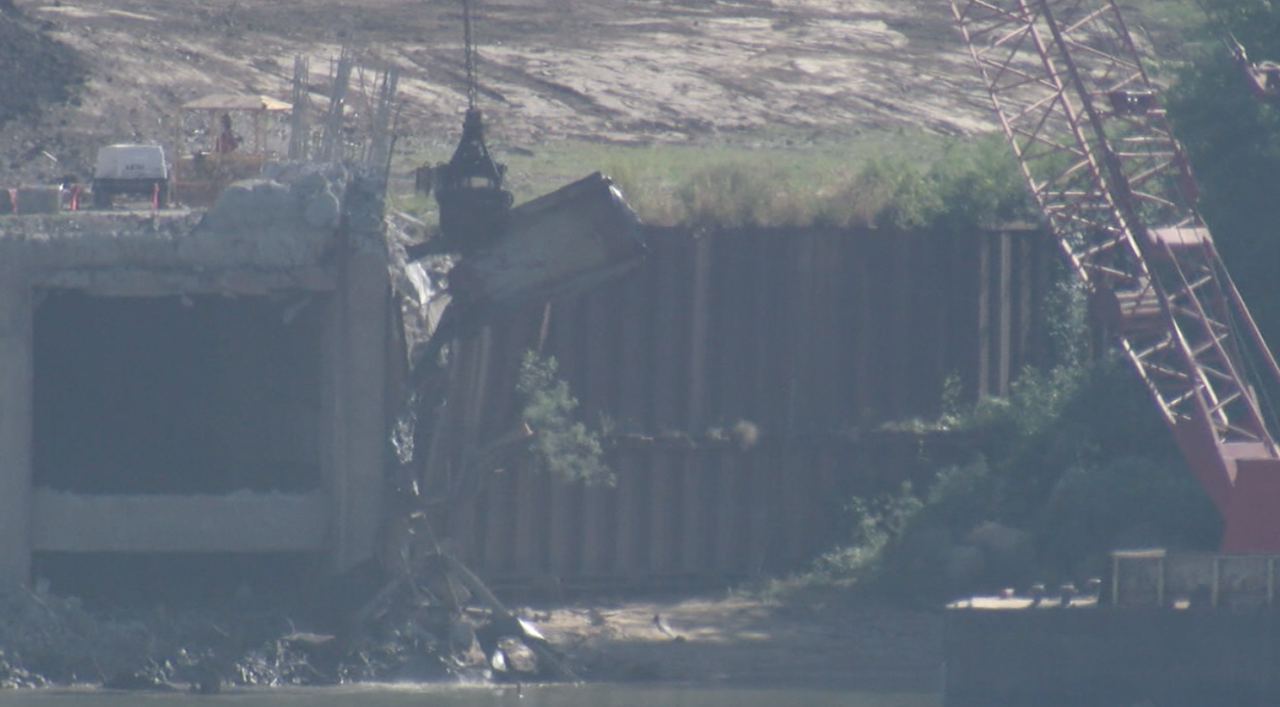
“Unfortunately, unless there’s changes to the law, it’s going to be kind of the same as what we encountered,” Wright said.
Ohio regulations require that asbestos be removed from structures before demolition, and that did happen at Beckjord, according to an October 2019 application letter by MCM to the Corps.
But non-asbestos materials are not regulated, according to an Ohio EPA spokesperson.
So it is unlikely that public records exist that reveal whether the Beckjord smokestack contained coal ash or other pollutants, or if it was cleaned before it imploded and fell into the river, because contractors do not need to provide that documentation to regulators.
“The Beckjord power plant has been decommissioned, coal ash removed and asbestos abated,” Fitch wrote in a permit application to the Corps signed in February 2020, which did not contain test results.
Based on documentation it received from the contractor, a Corps of Engineers spokesman said in March that any debris in the Ohio River is simply "brick and mortar."
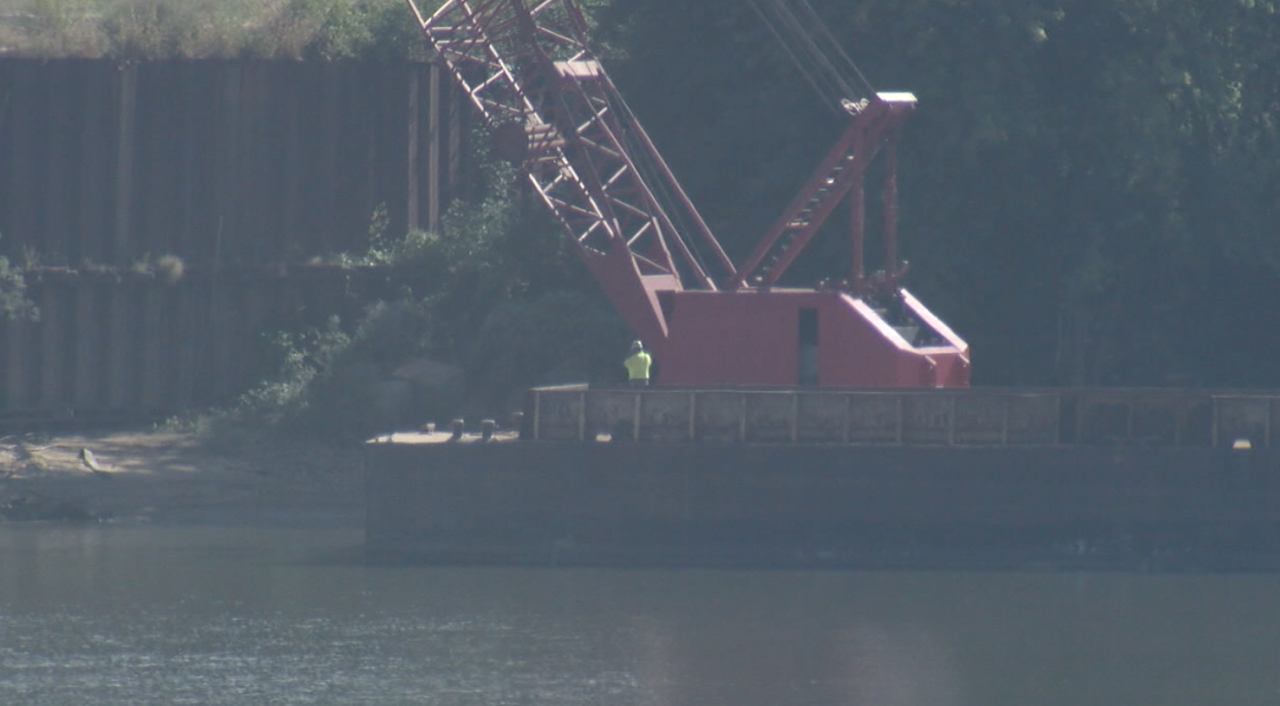
The Corps of Engineers sent an April 15 compliance letter to MCM ordering the company to submit a clean-up plan by the end of April. At that point, MCM estimated there was 75 cubic yards of demolition debris in the river, or enough to fill 2.5 commercial construction dumpsters.
A series of delays followed, because the Army Corps requested changes to proposed cleanup plans, and MCM asked for more time due to safety concerns, and their inability to secure a marine contractor or the right equipment.
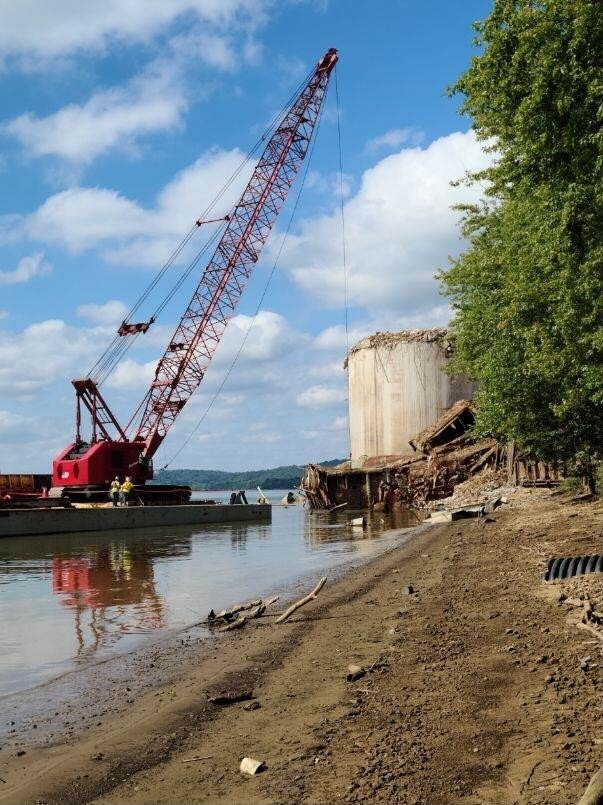
“The process of removing final debris from river along the site of the former Beckjord property is underway by our contractor. They are working under the approval of the U.S. Army Corps of Engineers and we anticipate this process should be complete by the end of next month," a spokesman for CLP wrote in a statement to WCPO.
Contractors finished removing all of the demolition debris from the land at Beckjord.
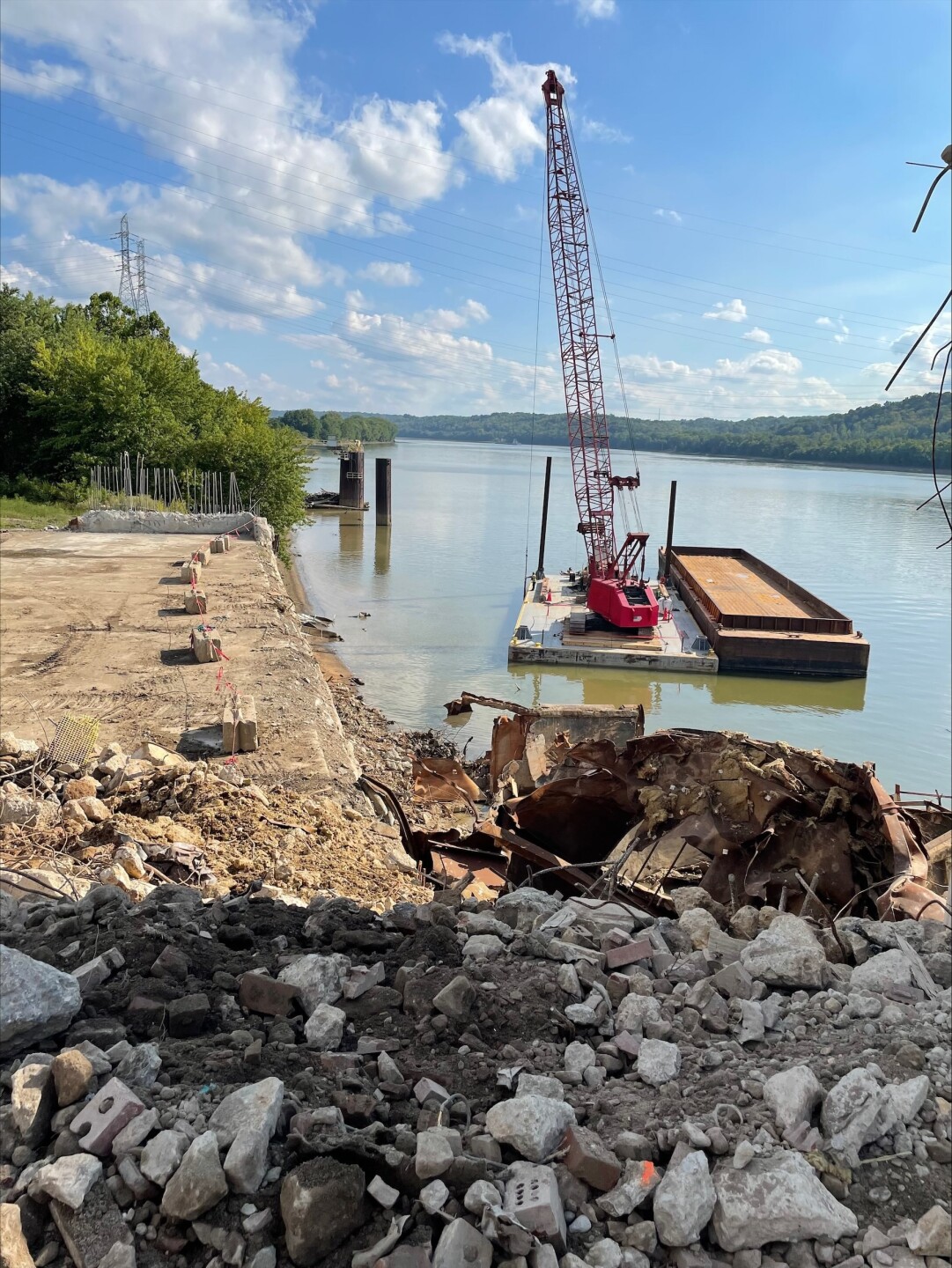
Once contractors finish the underwater cleanup, they will restore the shoreline to prevent erosion. Then crews will conduct a final SONAR survey to make sure all debris is removed from the river. The work should be finished by October 22.






